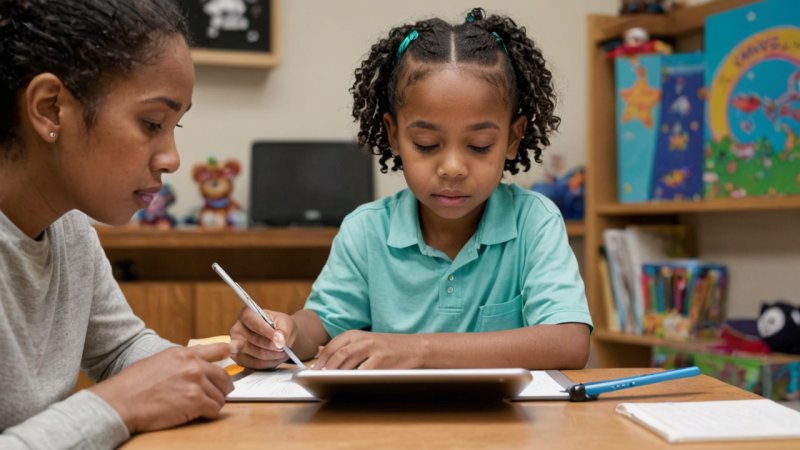In today’s digital age, technology has become an indispensable tool in various fields, including education. For children with learning disabilities, it can provide innovative solutions to enhance their literacy skills. This article explores how technology can support literacy for these children, offering practical insights for parents, educators, and volunteers.
Learning disabilities present unique challenges that can hinder a child’s ability to read and write effectively. However, technology offers a wide array of resources tailored to meet these challenges. From interactive apps to audiobooks, the options are vast. Here are some key ways technology can facilitate literacy for children with learning disabilities:
- Interactive Learning Apps: Many educational apps are designed specifically for children with learning difficulties. These applications often use gamification to engage users, making learning fun and effective. Examples include phonics-based games that help improve sound recognition and word formation.
- Text-to-Speech Tools: For children who struggle with reading, text-to-speech software can be a game-changer. This technology reads text aloud, allowing children to follow along visually while listening, which can improve comprehension and retention.
- Speech Recognition Software: Writing can be particularly challenging for children with learning disabilities. Speech recognition tools allow them to dictate their thoughts verbally, which can help them express their ideas without the frustration of traditional writing.
- Online Tutoring Platforms: Virtual tutoring can provide personalized support for children with learning disabilities. Many platforms offer one-on-one sessions with trained educators who specialize in literacy for children with diverse learning needs.
- Assistive Reading Devices: Tools like e-readers and tablets often come with adjustable font sizes and background colors, catering to specific visual preferences. These devices can also store multiple books, making reading more accessible and less cumbersome.
Incorporating technology into literacy education requires a collaborative effort. Parents, educators, and communities must work together to identify the best tools for each child's unique needs. Here are some ways individuals can support this initiative:
- Stay Informed: Understanding the latest technology and resources available for literacy support is crucial. Regularly researching and sharing information within your community can help others discover valuable tools.
- Participate in Workshops: Many organizations offer workshops on using technology to support literacy. Attending these sessions can equip you with the skills and knowledge needed to assist children effectively.
- Volunteer Your Time: Consider volunteering at local schools or literacy programs that cater to children with learning disabilities. Your time can make a significant difference in their educational journey.
- Advocate for Resources: Engage with local educational institutions to advocate for the inclusion of technology in literacy programs. Highlighting the importance of these tools can lead to better resources for children in need.
In conclusion, technology plays a vital role in supporting literacy for children with learning disabilities. By harnessing the power of innovative tools and fostering community involvement, we can create a more inclusive educational environment. Together, we can empower every child to reach their full potential in literacy and beyond.






